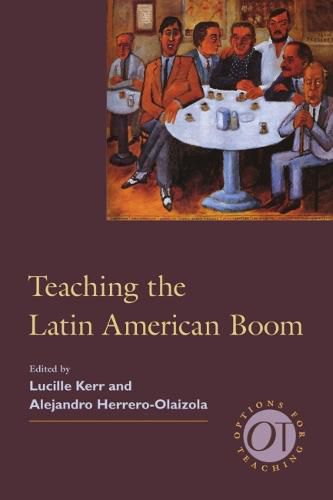Readings Newsletter
Become a Readings Member to make your shopping experience even easier.
Sign in or sign up for free!
You’re not far away from qualifying for FREE standard shipping within Australia
You’ve qualified for FREE standard shipping within Australia
The cart is loading…






In the decade from the early 1960s to the early 1970s, Latin American authors found themselves writing for a new audience in both Latin America and Spain and in an ideologically charged climate as the Cold War found another focus in the Cuban Revolution. The writers who emerged in this energized cultural moment-among others, Julio Cortazar (Argentina), Guillermo Cabrera Infante (Cuba), Jose Donoso (Chile), Carlos Fuentes (Mexico), Gabriel Garcia Marquez (Colombia), Manuel Puig (Argentina), and Mario Vargas Llosa (Peru)-experimented with narrative forms that sometimes bore a vexed relation to the changing political situations of Latin America.
This volume provides a wide range of options for teaching the complexities of the Boom, explores the influence of Boom works and authors, presents different frameworks for thinking about the Boom, proposes ways to approach it in the classroom, and provides resources for selecting materials for courses
$9.00 standard shipping within Australia
FREE standard shipping within Australia for orders over $100.00
Express & International shipping calculated at checkout
In the decade from the early 1960s to the early 1970s, Latin American authors found themselves writing for a new audience in both Latin America and Spain and in an ideologically charged climate as the Cold War found another focus in the Cuban Revolution. The writers who emerged in this energized cultural moment-among others, Julio Cortazar (Argentina), Guillermo Cabrera Infante (Cuba), Jose Donoso (Chile), Carlos Fuentes (Mexico), Gabriel Garcia Marquez (Colombia), Manuel Puig (Argentina), and Mario Vargas Llosa (Peru)-experimented with narrative forms that sometimes bore a vexed relation to the changing political situations of Latin America.
This volume provides a wide range of options for teaching the complexities of the Boom, explores the influence of Boom works and authors, presents different frameworks for thinking about the Boom, proposes ways to approach it in the classroom, and provides resources for selecting materials for courses